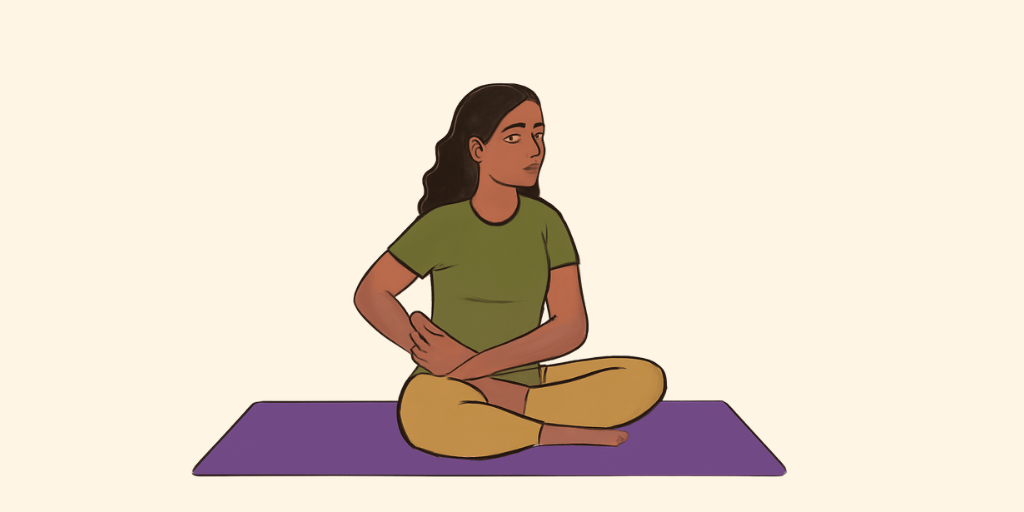Sanskrit Name: बद्ध पद्मासन
English Name: Bound Lotus Pose
Description:
Baddha Padmasana, commonly referred to as Bound Lotus Pose, is a seated yoga position that promotes a profound stretch in the hips and ankles. It is frequently utilized in meditation for its soothing and grounding properties. In Sanskrit: Baddha (बद्ध) translates to bound or locked, Padma (पद्म) refers to lotus, and Asana (आसन) signifies pose or posture. Thus, Baddha Padmasana means Bound Lotus Pose, which illustrates the action of securing the feet in the traditional lotus configuration. This binding enhances the stretch’s intensity and fosters a deeper meditative state. Originating from Hatha Yoga, this pose is viewed as a more advanced form of Padmasana (Lotus Pose). The binding element symbolizes the concept of detachment or limitation, suggesting that the binding of the legs represents the capacity to restrain oneself for greater clarity on the spiritual journey. It is typically practiced by experienced yogis who possess the requisite flexibility and strength to comfortably maintain the posture.
Benefits:
- Improved Flexibility: This asana enhances flexibility in the hips, knees, and ankles, promoting overall joint health.
- Calming the Mind: Practicing Baddha Padmasana can help reduce stress and anxiety, fostering a sense of calm and mental clarity.
- Stimulating Digestion: The seated position encourages proper alignment of the spine and aids in digestion by stimulating the abdominal organs.
- Strengthening the Back: This pose helps strengthen the back muscles, improving posture and reducing the risk of back pain.
- Enhancing Circulation: The position promotes better blood flow to the legs and pelvic region, which can alleviate numbness and improve overall circulation.
- Balancing Energy: It is believed to balance the root chakra (Muladhara), promoting feelings of stability and grounding.
Medical Conditions(Relief):
Baddha Padmasana, or Bound Lotus Pose, can be beneficial for various medical conditions. It may assist in alleviating symptoms of anxiety and stress by promoting relaxation and mindfulness. This asana may also enhance flexibility in the hips and knees, which can be advantageous for individuals with joint stiffness. Additionally, it can aid in improving digestion and may help with certain gastrointestinal issues by stimulating abdominal organs. Furthermore, practicing this pose can support overall spinal health and posture, potentially benefiting those with back pain.
Medical Conditions(Avoid):
- Knee Injuries: Individuals with knee injuries or chronic knee pain should avoid this asana due to the strain it places on the knee joints.
- Hip Issues: Those suffering from hip injuries, arthritis, or any hip-related conditions may find this pose uncomfortable or exacerbating their condition.
- Ankle Problems: People with ankle injuries or chronic ankle pain should refrain from practicing this pose, as it can put pressure on the ankles.
- Pregnancy: Pregnant individuals should generally avoid this pose, particularly in later trimesters, due to the pressure it can place on the abdomen and pelvis.
- Sciatica: Those with sciatica or other nerve-related issues in the lower back and legs may experience increased discomfort or pain while practicing this pose.
- Recent Surgeries: Individuals who have undergone recent surgeries involving the lower body should avoid this pose until fully healed.
- Severe Back Pain: Those experiencing severe or chronic back pain should be cautious, as the pose can strain the lower back.
- Balance Issues: Individuals with balance disorders or instability should avoid this pose, as it requires a certain level of balance and stability to perform safely.

